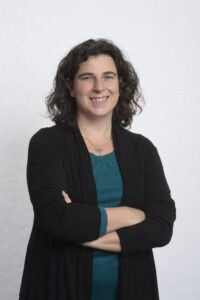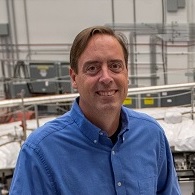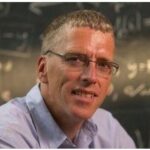HERZBERG PUBLIC LECTURE:
Monday, June 6 @ 19h30 – 21h00 EDT

“Generating High-Intensity, Ultra-short Optical Pulses”
With the invention of lasers, the intensity of a light wave was increased by orders of magnitude over what had been achieved with a light bulb or sunlight. This much higher intensity led to new phenomena being observed, such as violet light coming out when red light went into the material. After Gérard Mourou and I developed chirped pulse amplification, also known as CPA, the intensity again increased by more than a factor of 1,000 and it once again made new types of interactions possible between light and matter. We developed a laser that could deliver short pulses of light that knocked the electrons off their atoms. This new understanding of laser-matter interactions, led to the development of new machining techniques that are used in laser eye surgery or micromachining of glass used in cell phones.
PLENARY SPEAKERS:

Jane Heffernan | York University
Department of Mathematics and Statistics
Monday, June 6 @ 8h45 – 9h30 EDT
“Mathematical Modelling of COVID-19”
COVID-19 has plagued the globe. Mathematical models have been used to inform public health decision makers various global regions. In Canada, non-pharmaceutical intervention and vaccination programming were informed by modelling forecasts. In this talk we will review COVID-19 in Canada. We will then introduce mathematical models that have been used during the pandemic. Mathematical models of immunity will be presented, which quantify immunity protection by Canadian region.

“Combining modelling, theory, and simulations with experiments for design and structural characterization of soft materials”
My research group focuses on development and application of molecular models, liquid state theory, molecular simulation, and machine learning for studying soft macromolecular materials. In this lecture I will share examples of how we develop appropriate molecular models and use them with computational methods to better understand and predict effects of polymer design on the resulting macromolecular material structure and thermodynamics. I will also share experimental work from our collaborators that help us validate our model and computational methods as well as confirm our computational predictions.

Krishna Rajagopal | MIT Office of Digital Learning
Monday, June 6 @ 15h15 – 16h00 EDT
From MOOCs to Magic: Using Digital Tools to Enhance the On-Campus Learning Experience
As a university proud of the education we offer on our campus, we often speak about the “Magic of MIT”. Each of you has an analogous phrase. But, what do we mean? So much of the magic of the (MIT) on-campus university experience lies in the unscripted in-person engagement that happens among our community members, whether it be students working together on problems or projects or students and instructors engaging in seminars, discussions, solving problems, lab classes, research, …. Why, then, have MIT faculty put so much energy into building MOOCs? Standard answers include reach — bringing MIT to the world — and reputation and impact, within a field or more broadly. But among the physics faculty who have developed MOOCs these motivations come second to using MOOCs to enhance the learning experience of our on-campus students. I’ll describe some of the ways in which physics instructors at MIT are using MOOCs — or elements thereof — to deliver some of the more scripted parts of our teaching so as to create more time and space for the active, engaging, interactive, components from which the magic originates.

“The NSERC Chairs for Women in Science and Engineering in Canada”
For over 25 years, NSERC has supported a national network of five women scientists holding the Chairs for Women in Science and Engineering. The goals of this program are to celebrate and support leading women scientists and increase the participation of women in science and engineering. What are the successes and challenges of the Chairs program? Find out in this talk.

“First Results from the Muon g-2 Experiment at Fermilab’s Muon Campus”
The much anticipated initial results from the Muon g-2 experiment at Fermilab’s Muon Campus were released last year. The new determination of the muon’s anomalous magnetic moment is in good agreement with the intriguing value obtained at Brookhaven National Laboratory 20 years ago. The Muon Campus at Fermilab is a new accelerator facility capable of delivering the intense beams of muons required for the Muon g-2 and Mu2e experiments. This talk will discuss the Muon Campus physics program with an emphasis on the recent Muon g-2 results.

“Thinking Effectively About Gravity (the view from below)”
We live at a time of contradictory messages about how successfully we understand gravity. General Relativity seems to work well in the Earth’s immediate neighbourhood, but arguments abound that it needs modification at very small and/or very large distances. This talk tries to put this discussion into the broader context of similar situations in other areas of physics, and summarizes some of the lessons which our good understanding of gravity in the solar system and elsewhere has for proponents for its modification over very long and very short distances. The main message is mixed: On one hand short-distance quantum effects are notoriously difficult to control in gravity and cosmology seems to like features (like light scalars and small vacuum energies) that are not generic to the long-wavelength limit of fundamental theories. These are crucial clues that would be silly to ignore. On the other hand, General Relativity successfully passes many stringent new observational tests and also seems to be almost unique in its ability to reconcile quantum effects with gravity on longer distances without being inconsistent. Neither of these seems to offer much scope for modification. I try to organize what the successes of GR might be telling us, and provide a score-card about it says about the various alternatives that have been proposed.
